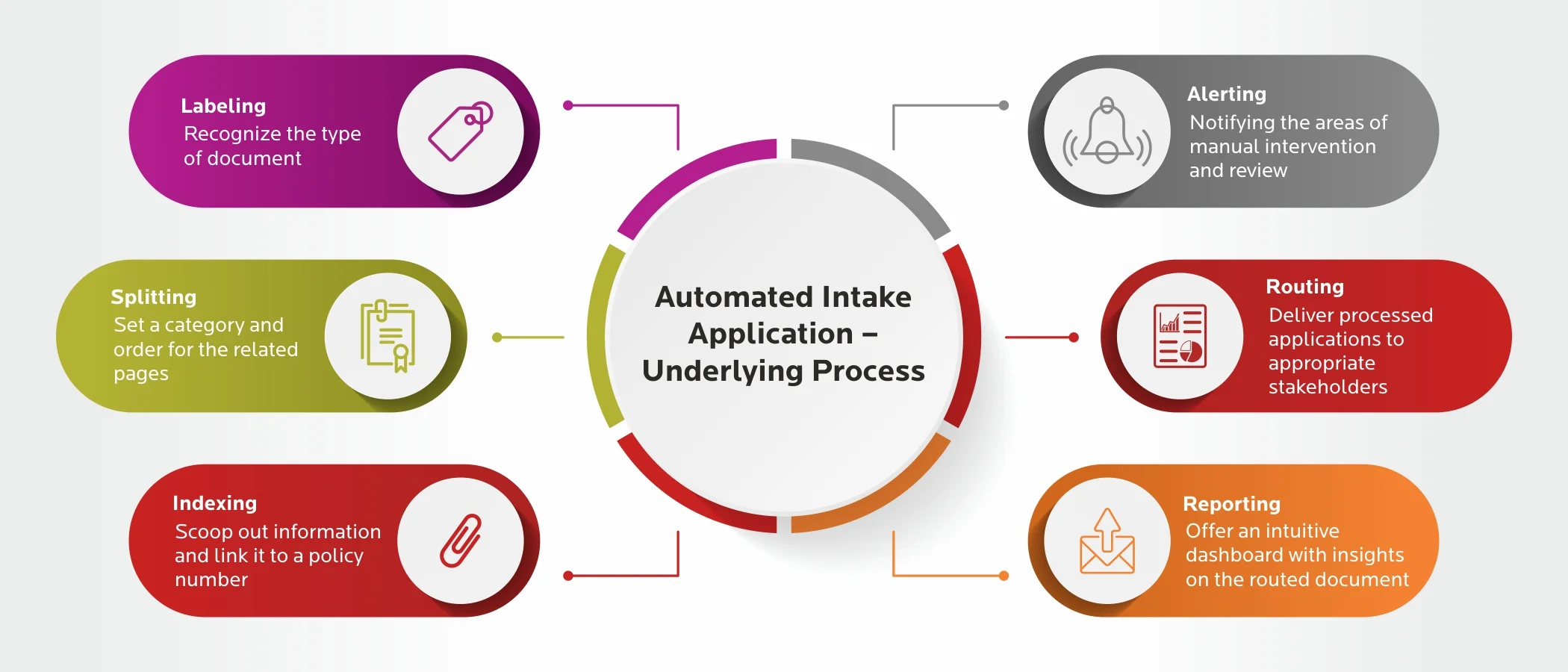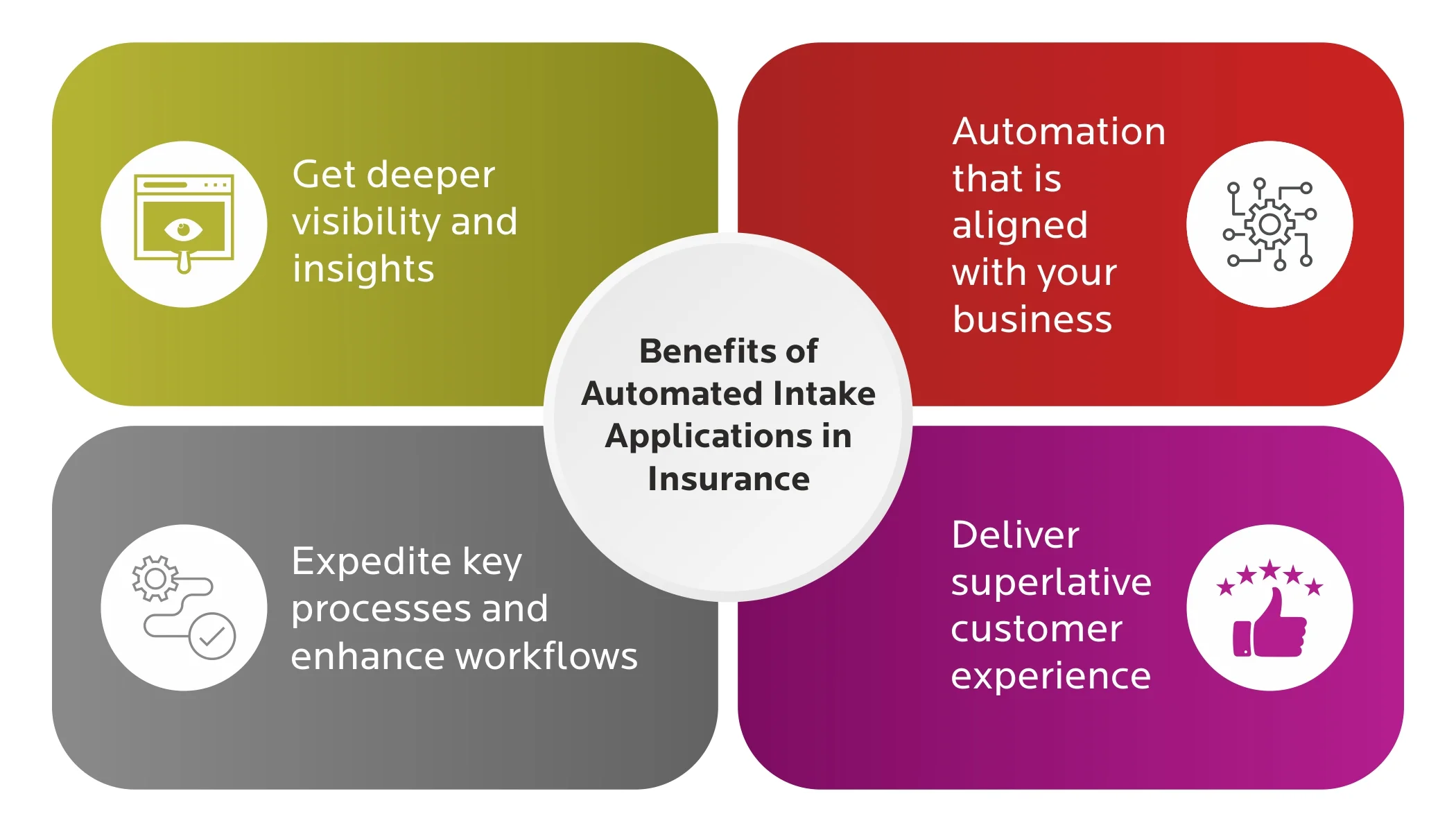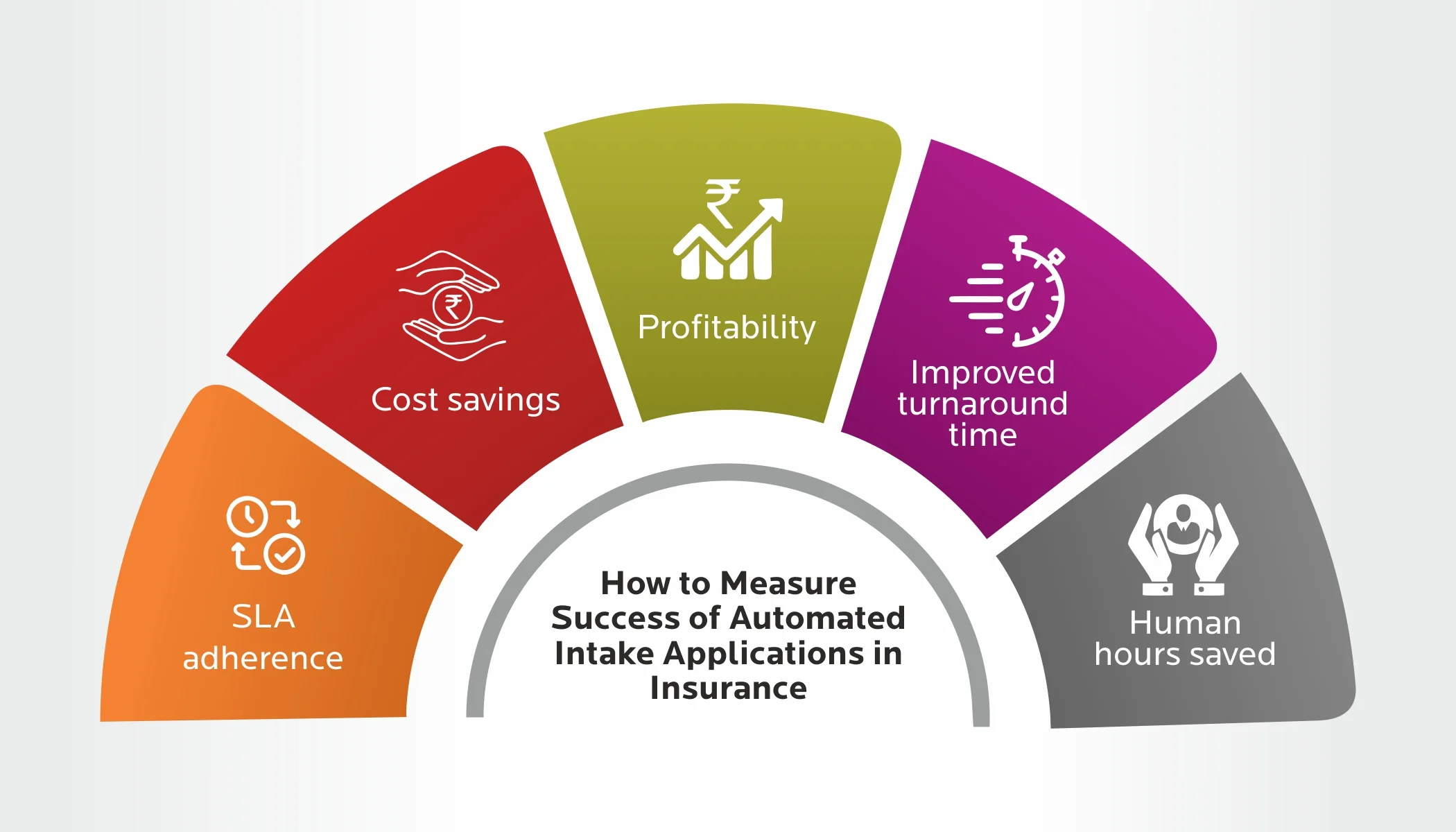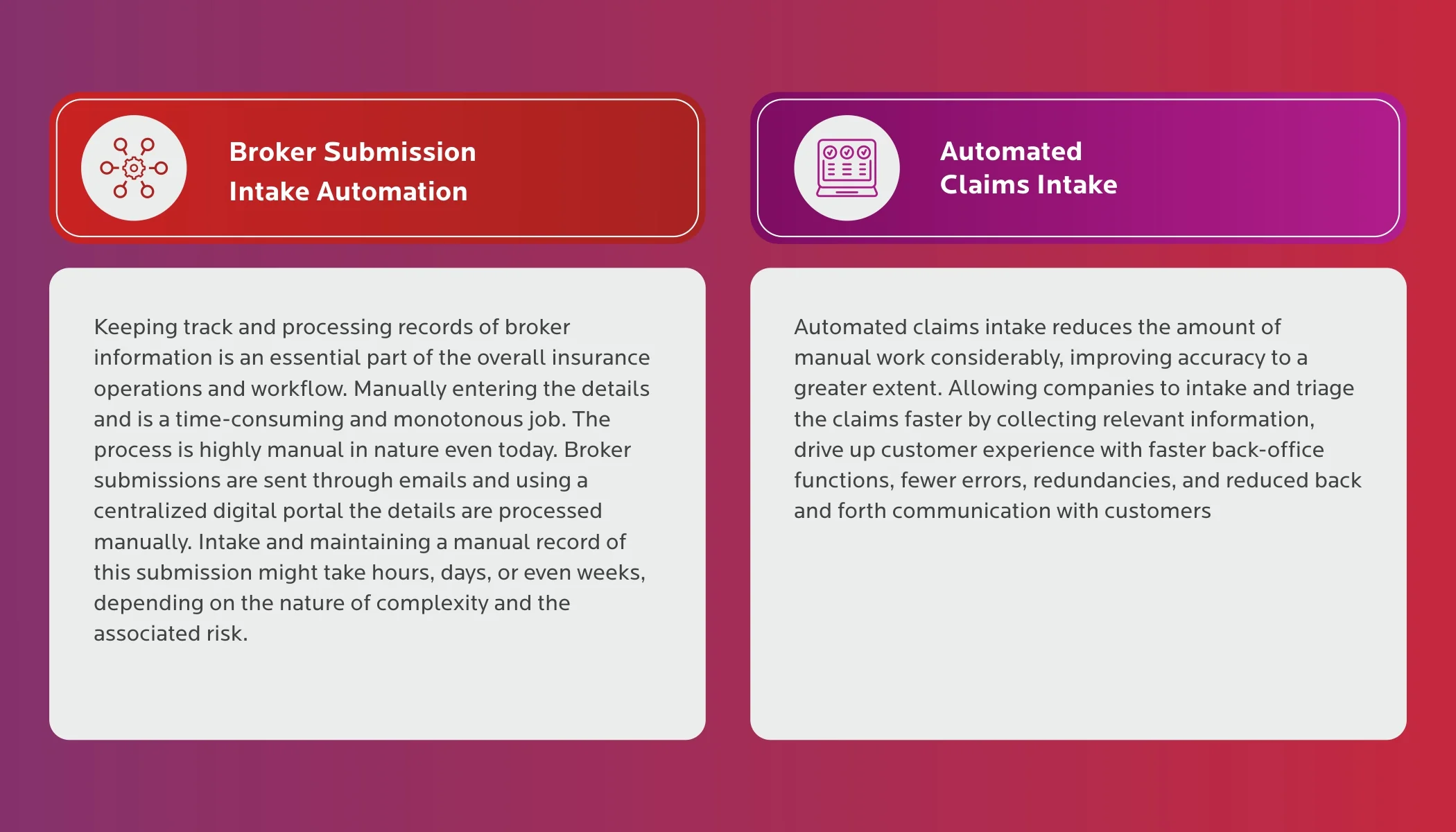Artificial Intelligence in commercial insurance opens a plethora of opportunities for professionals to ramp up efficiency, productivity, and workplace satisfaction. Automated Intake Applications (AIAs) enable insurance agents to bring an organized flow into the entire process. Streamline the intake of submissions or application documents and faster converting them into data to feed in their submission and underwriting systems.
These solutions are facilitated with the use of AI, natural language processing (NLP), and named entity recognition (NER) for the comprehension of insurance documents, analysis of unstructured data, and classification of insurance-centric data elements such as name, city, country, state, limits, premiums, deductibles, coverage type, endorsements, nominees, exclusions, loss run reports, statements of value, and more.
How Do AIA Work?
The process of Automated Intake Application involves careful scooping out of data from the most popular structured as well as unstructured data sources your organization relies on. These reliable sources are the stakeholders such as medical providers, claimants, policyholders, brokers, and agents.
Usually, with the help of AI and Machine Learning, an automated process is put in place which takes these structured and unstructured data through a multi-step process, generally comprising of the following steps:
- Labeling: Recognize the type of document
- Splitting: Set a category and order for the related pages
- Indexing: Scoop out information and link it to a policy number
- Alerting: Notifying the areas of manual intervention and review
- Routing: Deliver processed applications to appropriate stakeholders
- Reporting: Offer an intuitive dashboard with insights on the routed document

Automated Intake Application – Underlying Process
Successful insurers and underwriters automate their workflows and application processes related to a set of pre-defined events like an acknowledgment, requests for additions or missing information, and updates on approval or rejection on submissions.
An insurer leverages AI and machine learning models to make value-driven decisions and reduce the chances of unfair actions. Every output from these models improves the accuracy and precision of decision-making. Let’s look at this example of property and casualty insurance, a submission coverage for a property built in 1980 versus another property that shows no history of losses in the last five years. The AI model will make sure that the latter gets a reward of premium credit, thus delivering exceptional customer experiences. Had there been no AI model in place, insurers might miss considering these aspects when there’s a massive volume of application submissions.
Robotic Process Automation is another way to simplify, distribute, service, underwrite and improve productivity along with revenue growth. This process streamlines the application intake through a thoughtfully crafted strategy clearly aligned with business objectives.









